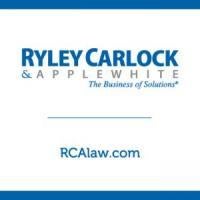You may be one of the many entrepreneurial folks who have created or want to create a self-directed IRA in order to make investments in real property, oil and gas interests, operating businesses, private placements and the like. You can choose for your self-directed IRA to take the form of a traditional IRA or a Roth IRA. However, although the owner can direct what it invests in, self-directed IRA's require a custodian or trustee to manage the IRA. The Tax Code contains a detailed and complex regime applicable to management of self-directed IRA's.
Prohibited Transactions and Disqualified Persons
One of the areas where an IRA owner can find themselves challenged by the IRS is with regard to "prohibited transactions" with "disqualified persons."
The term "prohibited transaction" includes:
-
the sale, exchange or lease of property
-
furnishing goods or service
-
making personal use of IRA assets
-
pledging IRA assets to secure a loan
The list of "disqualified persons" includes:
-
the IRA owner
-
his or her spouse and close relatives
-
certain fiduciaries such as a lawyer or accountant working for the IRA owner
-
entities that any of the foregoing individuals control
Therefore, when a "disqualified person" engages in a prohibited transaction, the tax consequences to the self-directed IRA can be dire and potentially cause the IRA to become immediately taxable with the possibility of penalties and interest charges.
A Cautionary Tale
A recent case from the U.S. Tax Court illustrates the need for caution when using self-directed IRAs. In 2001, Mr. Peek and Mr. Fleck established self-directed traditional IRA's with rolled over cash from traditional IRA's. The men had their self-directed IRA's purchase all of the stock in a new corporation which bought the assets of a company providing alarms and fire protection systems. In acquiring these assets, Peek and Fleck personally guaranteed a promissory note to the sellers for a portion of the purchase price.
Several years later they converted these self-directed traditional IRA's into self-directed Roth IRA's and paid the tax at that time. Following several more years during which the business flourished, Peek and Fleck found a buyer for the business and had their self-directed IRA's sell all of the company's stock at a significant profit. Upon audit, the IRS contended that Peek's and Fleck's personal guaranties of the seller financing, which still existed until the stock sale, was a prohibited transaction and all of the sale proceeds were taxable income at ordinary tax rates.
The Tax Court rejected the argument of Peek and Fleck that they hadn't engaged in a prohibited transaction because their guaranties ran to the company, not to their self-directed IRA's. The Tax Court found that these taxpayers had made an indirect extension of credit to their IRA's. The result was that the sale proceeds which Peek and Fleck thought would be free from tax because of the Roth status were then taxed immediately as ordinary income. In addition, they were made to pay accuracy-related penalties.
Your Take Away
Careful planning is required when setting up and investing a self-directed IRA. Don't assume that you can structure the investment the same way you would if you were putting in funds from outside of your retirement accounts. Moreover, self-directed IRA custodians or trustees vary in the amount of supervision and guidance they provide. They may have liability for an incorrectly structured investment; however, that does not negate your potential tax liability.



 />i
/>i
